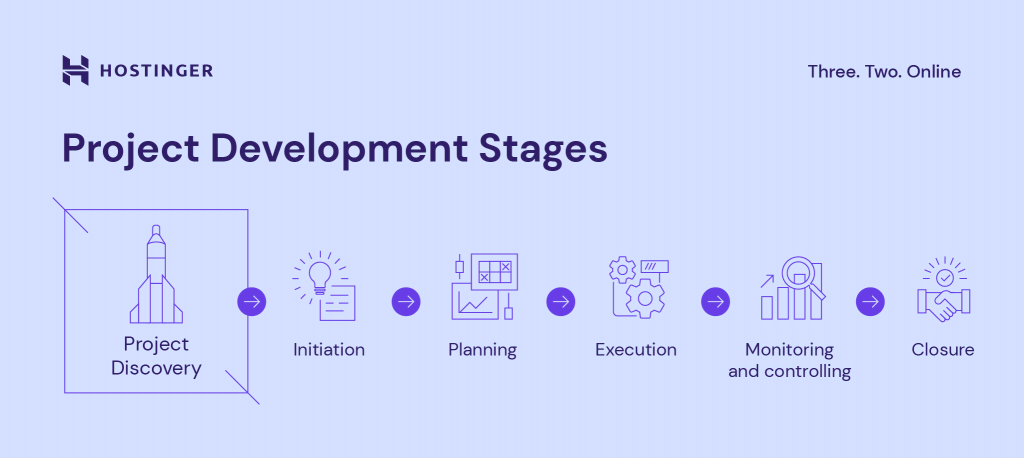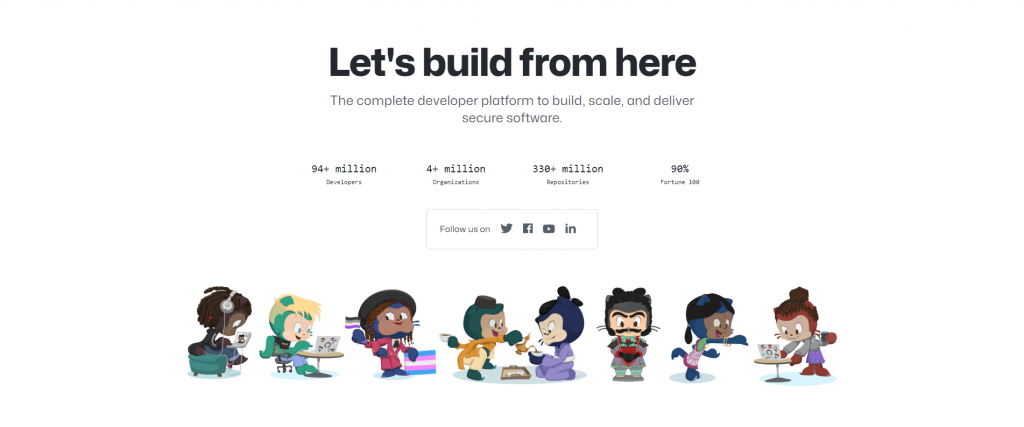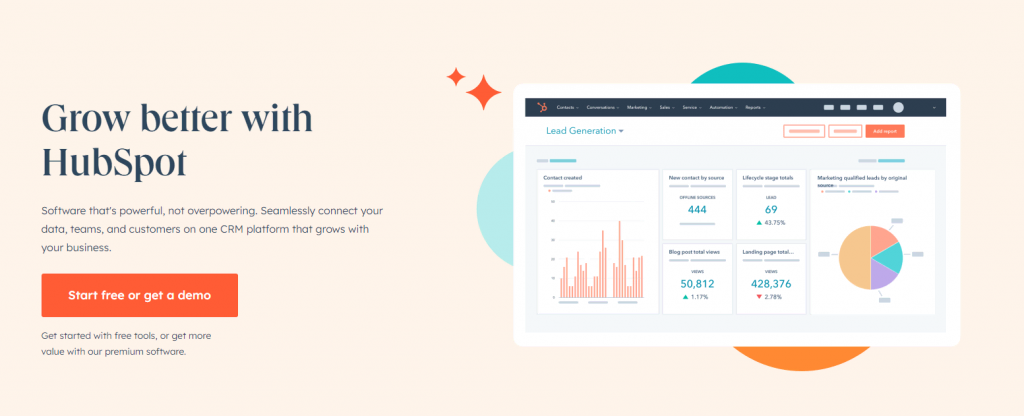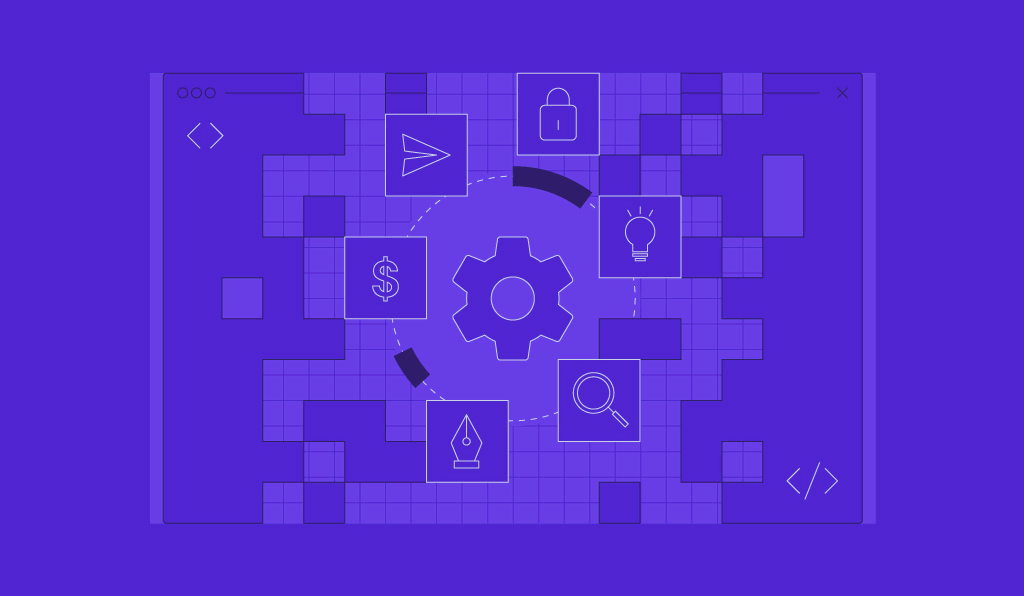How to Conduct Project Discovery Phase + Best Practices For Project Success

Many projects suffer from inefficient management and unclear objectives because business owners don’t have enough information to support their goals. The best way to avoid this situation is to conduct a project discovery phase.
Read more to find out how this phase can benefit your business projects and discover the necessary steps you should take to ensure the discovery process is effective.
What Is the Project Discovery Phase?
The project discovery phase a planning stage during project initiation, where the team collects project details, establishes a budget, and defines clear project limits. Its purpose is to enable informed decisions and minimize risks related to product development.
Why the Discovery Phase Is Important
Adding a discovery phase to your project development cycle can benefit you in many ways. Let’s take a look at five reasons why this stage is important.

Fewer Expenses and a Well-Planned Budget
A well-executed discovery phase enables businesses to make informed decisions about their expenses.
By reviewing all potential options thoroughly, companies can save money by avoiding unnecessary costs and creating a well-planned development budget.
The discovery phase is the best time for the development team to list any project requirements and the number of resources needed. This may include purchasing any additional tools or hiring more human resources for the project.
The team can also prepare an emergency budget according to the anticipated results.
In this way, the discovery phase lets businesses establish realistic expectations for their projects and helps them prioritize resources accordingly.
A Better Understanding of Your Product’s Scope and Goals
The project team needs to fully understand the project scope and how it can benefit the company.
By adding a discovery stage to the development process, the project manager can communicate this information to all stakeholders and clarify the project’s vision.
A lack of clear scope and goals will raise the risk of project failure as the development team might waste time, effort, and resources trying to figure out the project’s direction.
Discovery workshops help your team identify precise project boundaries and key objectives to achieve the main goal.
From there, project managers can delegate the right person for a specific task within the project based on the previous discussion.
Identifying Your Customers’ Pain Points and Needs
A big part of the project discovery phase is conducting user research. This includes identifying target customers’ needs and pain points and making them a crucial driver of the entire project.
Ideally, set all key objectives and decisions within the project to address these pain points.
Making the most of the project discovery stage enables your company to create an attractive product and increase the chances of the project’s success.
A Unique Value Proposition and Well-Defined Market Positioning
Agencies can use the discovery phase to pinpoint opportunities by conducting market research and formulating a valuable product for their customers.
The project discovery phase is the perfect time for teams to gather data and determine how their project can thrive in the market.
The Ability to Outperform Competitors by Learning Their Flaws
Avoiding competition is almost impossible, no matter what industry you’re in. Therefore, every business needs to find ways to outperform competitors by analyzing their strong and weak points during the project discovery phase.

How to Conduct an Effective Project Discovery Process
We can summarize the discovery process into two main tasks – data collection and analysis. However, the methods might differ depending on the business model and project type.
Take a look at these nine steps to get a general idea of conducting an effective project discovery process.
1. Form a Discovery Team
Your discovery phase should begin with establishing a project discovery team. This team often includes the project manager, business analyst, and other roles depending on the project type.
For example, a software development project may also include engineers and UI/UX design specialists.
The discovery team is responsible for carrying out all the necessary steps during this initial phase of a project.
The project manager will cover aspects like procurement and project implementation, while the business analyst deals with external factors such as market research.
2. Set a Problem to Solve
A good discovery phase is driven by identifying a problem to solve. The entire project team should brainstorm to develop this into the project’s main goal and formulate key objectives to solve it.
Using a real problem as the basis of the project gives you a better chance of bringing value to your target audience.
The issue itself doesn’t necessarily have to come from the customer’s side. It can be based on what your company is currently facing.
For example, Wanstrath and Preston-Werner invented GitHub in 2007 because they needed a collaborative tool for their own software development project.
They created the tool out of necessity while also solving the same problem other software developers experienced at the time.
So, ensure the problem you want to solve correlates with the company’s business goals. Pick a problem based on feasibility, impact, and urgency. Finally, narrow down your choices until you find one that best fits the project’s criteria.
3. Define Desired Outcomes
The next step is to lay out the desired outcomes based on the problem you decided to solve. It is important to make sure your objectives are measurable for easier and more effective tracking and evaluation.
For example, a web development company finds that some customers are looking for an easier way to develop a simple website independently.
The project team then comes up with a solution to create a web-builder application with an intuitive user interface and web hosting services already included.
Based on the project goal, set relevant objectives that represent the necessary steps to achieve this outcome. You can use key performance indicators (KPIs) in the later stages of development to track and measure the project’s progress more accurately.
4. Gather Opportunities
The discovery phase is the perfect time to gather all necessary information before the project execution to find opportunities to achieve the desired outcomes.
You can get this data from clients’ feedback, frequently asked questions to your customer support team, or search them online.
The amount of information you gather and what sources you use may vary depending on your business size and experience.
Bigger, more established companies can focus on gathering information from internal findings, while newer agencies may need to rely on competitor analysis.
Remember to always link market opportunities back to your desired outcome. This way, you won’t waste time processing unnecessary information and can instead focus your efforts on more relevant and impactful opportunities.
5. Define the Target Group
Next, it’s crucial to define and understand the target market for your project. This step is essential to refine and smoothen other processes in the project development process.
Various decisions and problem-solving methods in the project should revolve around the target group’s preferences.
For example, companies working on software development projects should consider the average customer’s device specifications and usage behavior before designing their product.
Start by determining the criteria and traits that describe your target audience or consumer. Then, compare these traits with the findings from your market research to get a more realistic picture of your target group.
Consider also building a customer persona. This approach can help your development team get more detailed characteristics of the project’s ideal user and find the best method to fulfill their needs.
6. Survey Customers Within the Target Group
User interviews and surveys are a great way to strengthen your understanding of the project’s target audience. This enables the project discovery team to get more detailed insights from those who will use the final product.
Make sure to approach people who match the criteria for your project’s target group. Then, ask them questions related to the problem you want to solve with your final product.
Additionally, select the best data collection method based on your budget and preferred project timeline. One-on-one interviews can provide in-depth information, but it requires more time.
On the other hand, focus group interviews enable you to cover more subjects quickly on the surface level.
List and analyze the patterns that emerged from the surveys, then rank the findings based on importance. This gives you a better perspective on how to tackle the project for optimal impact.
7. Define the Scope of Work
Another big part of the project discovery phase is scope assessment. This step involves setting limits for the project to help all parties involved focus on the main goal, which is crucial for project management.
Some factors to consider when assessing the scope of your project include:
- Identifying stakeholders – determine who needs to be involved in the project and who should be kept in the loop. Project managers should decide which personnel best suits which task and assign them accordingly.
- Defining deliverables – identify the essential tasks and how they contribute to the end product. You should base this decision on the project’s main goal and weigh deliverables based on effort vs impact.
- Establishing a project roadmap – list a set of milestones and their estimated timelines. Communicate this roadmap to every stakeholder so they can set the appropriate KPIs.
- Weighing risks and constraints – find any elements that could impact the project negatively. Formulate possible mitigation strategies and prepare a plan B.
- Creating a budgeting draft – outline what resources are required to complete the project and how much they will cost.
8. Arrange the Technical Development
Depending on the project, you should also prepare all business and technical requirements during the project discovery phase.
For example, a software development lifecycle may require technical documentation, a development environment, and an architecture overview.
This planning stage helps you accurately estimate the project’s technical and logistical needs to avoid any possible development risks.
9. Prepare for the Next Steps
Once you finalize the discovery phase, it is time to share and discuss the findings with external stakeholders. This is where you’ll decide the timing for project initiation, present proposals to investors, and start contacting suppliers.
Plan the next steps with all parties involved and prepare to adjust your initial project plan based on feedback from clients or investors.
Best Practices for Conducting the Discovery Phase
There are many aspects to consider when conducting your project discovery phase. Let’s look at five tips you can apply to get the most out of this planning stage to increase the project’s success rate.
Build a Strong Team
Identify what set of skills you need to achieve the project goal during the discovery phase. Use this chance to communicate with the project manager and build a strong team to support all the necessary tasks.
Let’s say you’re launching a new software project. You’ll need specialists to research the user journey and develop a good preliminary UX prototype for the engineers to implement during product development.
Use the Right Tool for Data Collection
Choosing the right applications for data collection and processing can save you time and money. Tools like Google Forms and Survey Monkey are some of the most popular solutions for collecting qualitative data.
These services enable your team members to streamline a lot of the discovery phase activities. More importantly, many of these tools are free to use, so they are cost-effective.
Make Sure to Conduct Competitor Research
Reviewing an existing product or service similar to your project helps you establish a better value proposition.
For example, if you’re running a client-management software project, consider doing an in-depth analysis of popular solutions like Zoho or HubSpot.
Check their core features and list any customer pain points they haven’t solved. This can help you develop a unique product and gain more customers.
Communicate the Project With All Team Members
Make sure all team members share the same objective about the project. For more transparent project management, business owners should involve employees in every aspect of the discovery phase to get the most out of their skills.
Team members can feel more motivated when they understand the reason behind every task they do. It also encourages them to share their ideas to improve the project development process.
Treat the Discovery Phase as a Separate Project
Some people see the discovery phase as a small part of the project development cycle and think it overcomplicates the process.
However, companies should see the discovery phase as a separate, preliminary project where the business owner and discovery team analyze the prospects of a new product.
This enables the team to focus more on identifying real opportunities and potential hurdles to ensure the success of a future project instead of launching an initiative based on unproven hypotheses.

Conclusion
Conducting a discovery phase is the best way to collect the necessary information to support any decision-making and problem-solving strategies in your business project.
This phase can help you save costs, understand target customers, identify your project’s scope and goals, and deliver products or services with unique value propositions.
Here are nine steps you can take to conduct an effective project discovery phase:
- Form a discovery team.
- Find a problem to solve.
- Define the desired outcome.
- Gather opportunities.
- Choose the target audience.
- Survey people in your target group.
- Define the scope of work.
- Arrange the technical aspects.
- Prepare for the next development steps.
Remember that the success of your discovery phase also relies on several factors, including the team’s capabilities, data collection, and processing tools, gathered information on competitors, and communication between all parties involved.
Overall, the discovery phase is an invaluable part of any business project. Investing the time now to ensure a successful launch can save you from costly errors later on – so don’t forget to factor this into your project planning.
Project Discovery Phase FAQ
In this section, we will answer some frequently asked questions related to the project discovery phase.
What Happens if You Skip the Discovery Phase?
The main drawback you may experience when skipping the discovery phase is the lack of necessary information to support your project’s goal. This may result in an inefficient management process and unclear objectives that increase development risks.
How Long and How Much Money Will a Product Discovery Phase Take?
The exact timeline and cost of a project discovery phase depend on the project type and business model. Companies can adjust this stage to their preferred timeline and budget constraints.
Who Participates in the Project Discovery Phase?
The project discovery phase commonly involves a team consisting of the project manager, business analyst, and team leaders for specific development tasks. They will collaborate to gather the required information to initiate the project and estimate its profitability.




